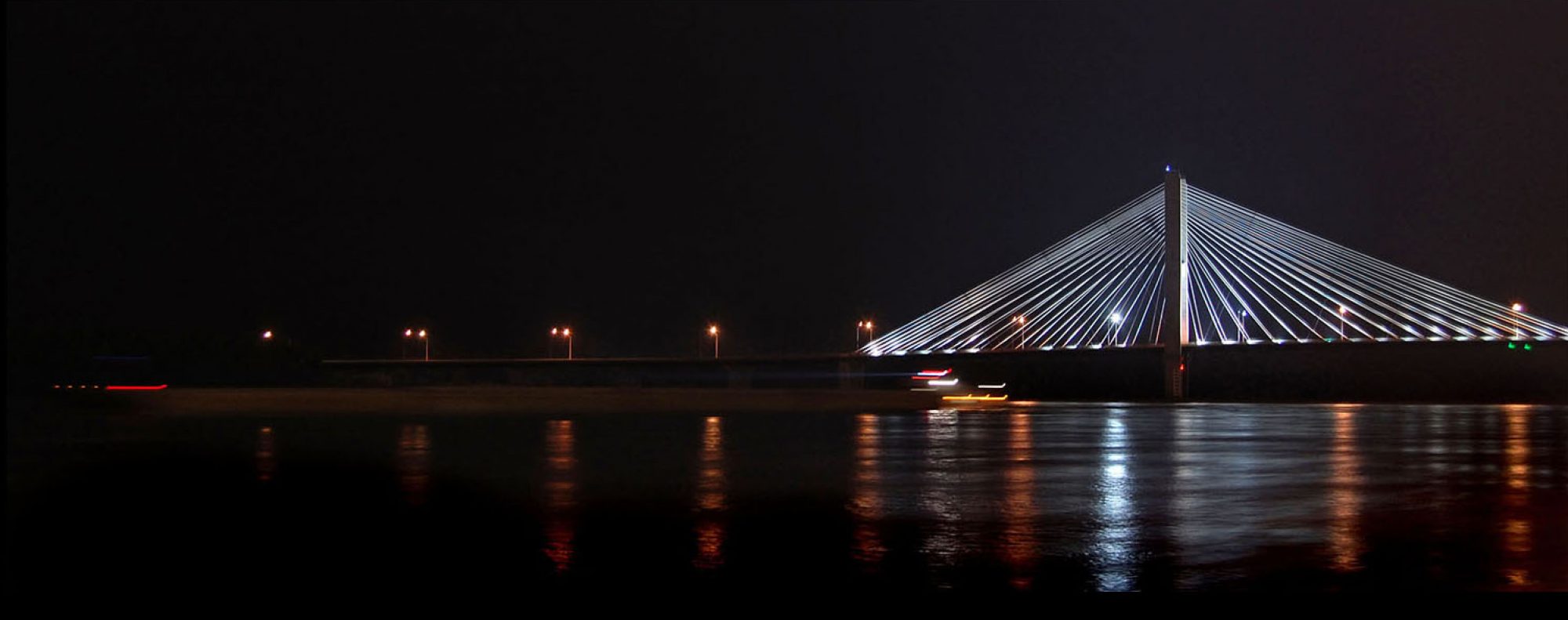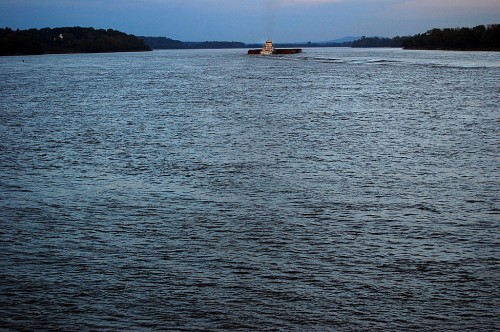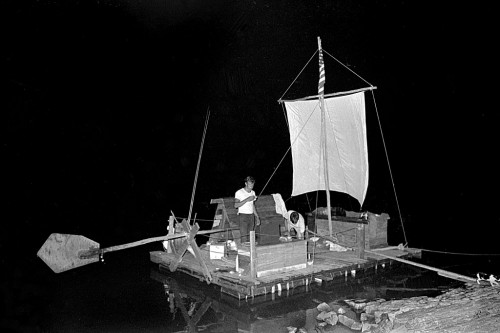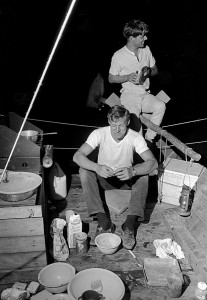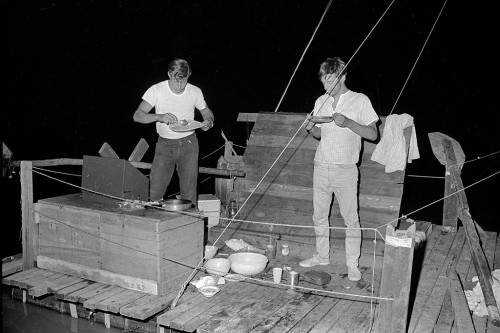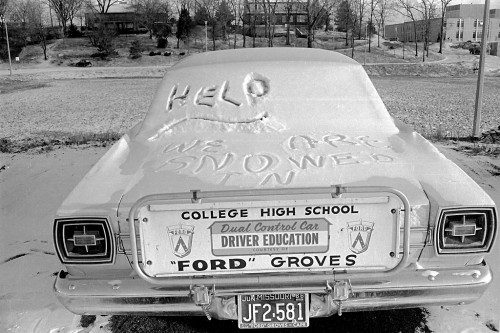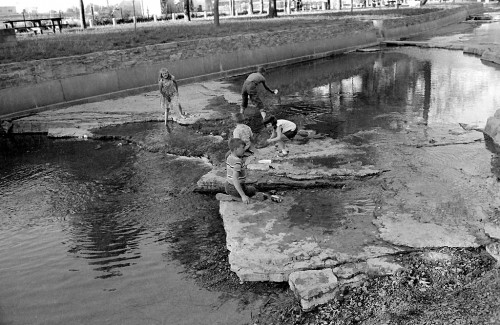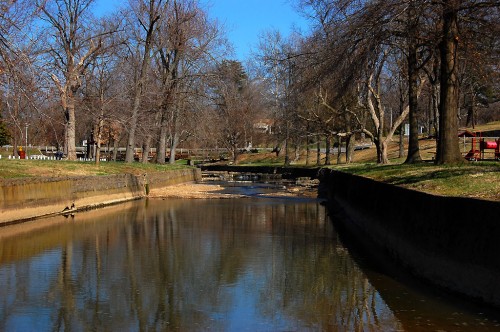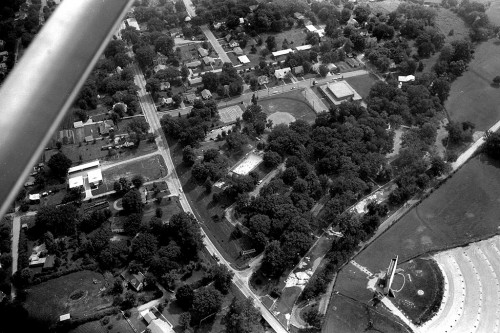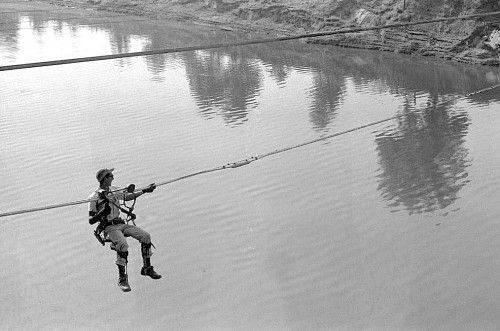 Lester Harris, a repairman for Southwestern Bell, had a job that has to be just one twitch short of crazy. Seems like hunters and people with more bullets than brains like to use the telephone cable across the Diversion Channel for target practice.
Lester Harris, a repairman for Southwestern Bell, had a job that has to be just one twitch short of crazy. Seems like hunters and people with more bullets than brains like to use the telephone cable across the Diversion Channel for target practice.
When I did this story for The Missourian August 16, 1965, Jack Hogan, outside plant foreman for SW Bell, said that the cable had been put out of service 36 times in the previous three of four years. Some times only a couple of wires would be clipped, but on one occasion, the airport and the FAA Flight Service Station were knocked out for more than two hours, something that made the FBI cranky.
Lester Harris gets the call
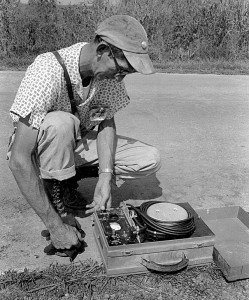 When the phones go dead, Lester Harris is the guy they’d call out.
When the phones go dead, Lester Harris is the guy they’d call out.
He had some high-tech equipment that would help pinpoint a break by detecting leaks in the pressurized cable.
But, shootings had been so common on this stretch of cable that he generally relied on a low-tech solution: he’d walk up and down the area until he spotted some fresh shell casings. The break wouldn’t be far away.
Causing damage to the circuits feeding the airport could net the shooter a $10,000 find and up to 10 years in federal prison.
“We don’t want to see anyone get in trouble, but when they start shooting at the cable running service to the airport, they’re endangering lives and there’s nothing funny about that.
Is the break near a pole?
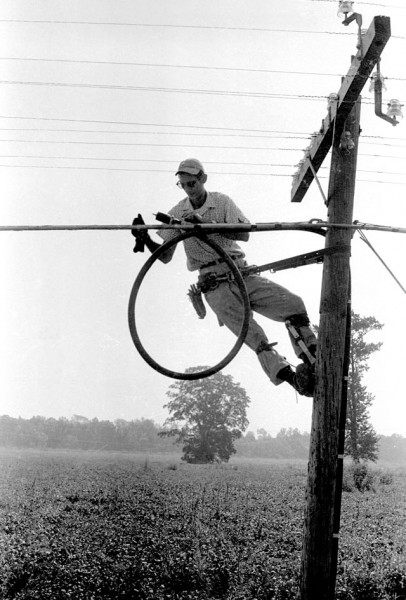 If the break is near a pole, the repair can be made fairly simply working with a climbing belt and spikes.
If the break is near a pole, the repair can be made fairly simply working with a climbing belt and spikes.
Break out the cable buggy
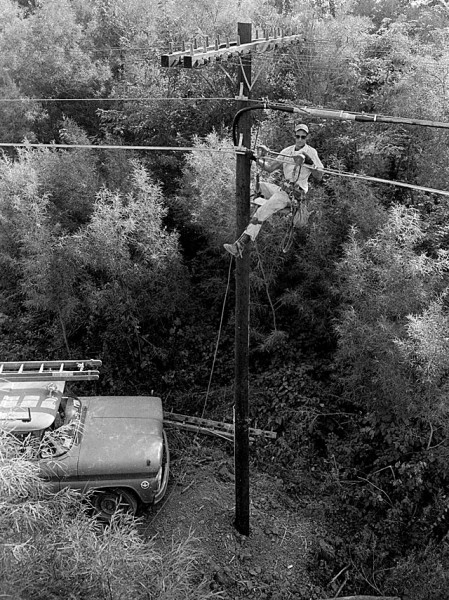 If the break is away from a pole, then it’s time to break out the cable buggy. Think of a child’s swing suspended by two short chains attached to little pulley-like wheels. The telephone cable is suspended from a wire cable. The cable buggy rides on that wire cable and Lester rides on the “swing.”
If the break is away from a pole, then it’s time to break out the cable buggy. Think of a child’s swing suspended by two short chains attached to little pulley-like wheels. The telephone cable is suspended from a wire cable. The cable buggy rides on that wire cable and Lester rides on the “swing.”
Climbing aboard the buggy
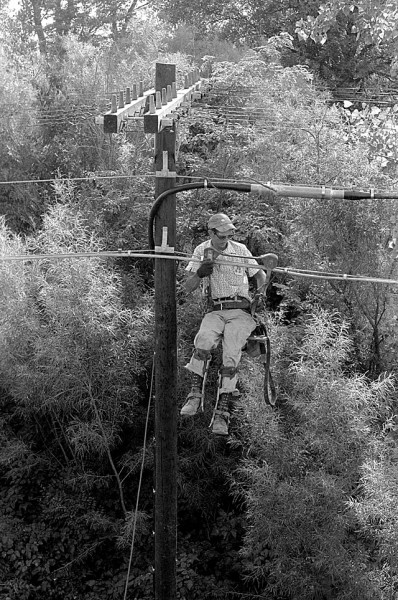 Let’s put this in some kind of perspective: the reason Lester is there is because someone has been shooting at the telephone cable. Phone wire is softer and more delicate than the wire support cable, but who is to say that some stray bullets haven’t nicked some of THOSE wire strands, too, weakening it?
Let’s put this in some kind of perspective: the reason Lester is there is because someone has been shooting at the telephone cable. Phone wire is softer and more delicate than the wire support cable, but who is to say that some stray bullets haven’t nicked some of THOSE wire strands, too, weakening it?
“I’d be a goner”
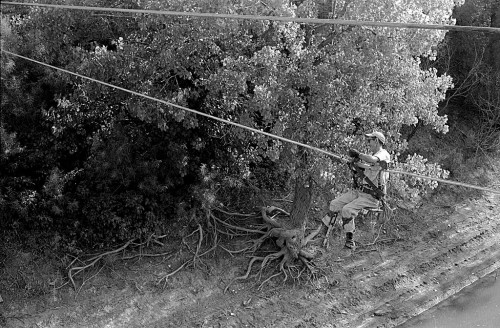 Soon, Lester is suspended 60 feet above the dark and muddy Diversion Channel on from a small wire cable that may or may not be damaged by gunfire. “If I would slip off the board with all my equipment on and fall into the channel, I’d be a goner,” he said.
Soon, Lester is suspended 60 feet above the dark and muddy Diversion Channel on from a small wire cable that may or may not be damaged by gunfire. “If I would slip off the board with all my equipment on and fall into the channel, I’d be a goner,” he said.
Splicing the line isn’t too bad in the summer, he said. Getting called out at 2 .m. to repair a shotgun-riddled cable in the middle of an ice storm is another story, though. On another night, when the river was high and the wind was blowing, he got “seasick” riding the buggy.
“People just don’t think,” he said. They just don’t realize the damage they can do by shooting at a cable.”
